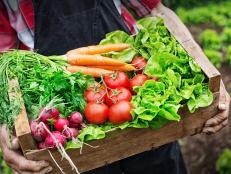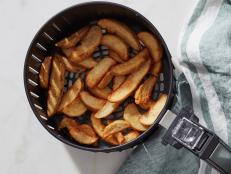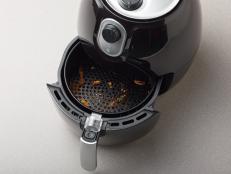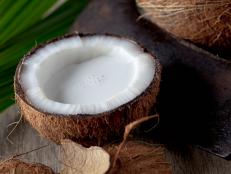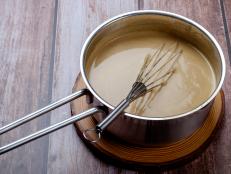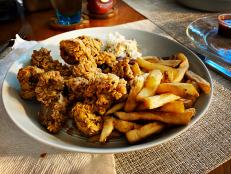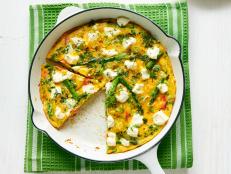How to Cook Lentils
Not all lentils cook the same. Here’s how to cook and use the different kinds.

By Maya Ferrante and Fraya Berg for Food Network Kitchen
Lentils are a type of pulse, which are the edible seeds of legumes, a category that also includes dried beans, peas, chickpeas. Lentils are one of the oldest cultivated pulses and are an affordable nutrient-packed and protein-rich ingredient, making them an extensively used staple ingredient across many cultures in the Mediterranean, Europe, India, the Middle East, North and Latin America. For even more information on lentils, head over to our story What Are Lentils?.

Get the Recipe: Lentil Sloppy Joes
Unlike other dried legumes, lentils do not require soaking before cooking and can generally be cooked in under 30 minutes. Cooking time varies depending on the varietal of lentil, softer lentils (red/yellow/orange) cook in 5 to 10 minutes while firmer lentils (green, brown, black beluga, Le Puy) cook in about 25 to 30 minutes. For all lentil varietals, make sure to use unsalted water or broth to get the best results because salt will toughen the lentils while cooking.
Types of Lentils and How to Use Them
Lentils come in a variety of shapes, sizes and colors and while each has a use it's best for Puy, Beluga and green and brown are fairly interchangeable. That's a good thing to keep in mind when shopping if a recipe calls for Puy or Beluga but your market doesn't carry them.
Puy or French Green Lentils
French green lentils, also called Puy lentils, have a thicker seed coat than green or brown lentils and are smaller and rounder. Their seed coat helps them maintain their shape, so they are a go-to for salads, sides and grain bowls.
Beluga Lentils
Beluga lentils, also called black lentils, are named after the caviar they resemble when cooked. They are the most nutritious variety of lentils, with a hearty flavor similar to that of black beans. Beluga lentils keep their shape when cooked, making them perfect for any dish where you want the individual lentil to stand out with a visual impact like a lentil and squash side dish or a carrot salad.
Green or Brown Lentils
These types of lentils are very common: many different brands make them and they're sold in one-pound bags. These flat lentils cook quickly and become soft, making them to go-to for lentil soup. You may want to puree some of the soup to make it extra creamy but it’s not a must like it is for bean soups.
Red/Yellow/Orange Lentils
Red/yellow/orange lentils are sold split, which allows the lentils to cook really fast—like 5 minutes fast. They lack a seed coat, so they lose their shape and achieve a smother consistency than any of the other lentil varieties. Masoor dal is what red and orange lentils called at Indian markets, and they are used in soupy curry recipes. Chana dal refers to yellow dal and it is also used in soups and curries. During the holy month of Ramadan, Muslims fast from dawn to dusk. After sundown the fast in often broken with Harira, a thick soup made with chickpeas and red lentils.
Dried vs Canned Lentils
We’ll just come out and say we usually prefer dried lentils to canned most of the time. Canned lentils are fully cooked and can save you on time, but since lentils cook relatively quickly the benefit of canned isn’t as great as with other dried pulses. (Dried chickpeas, for example, need to be soaked overnight and then cooked for an hour or more. Lentils take 25 minutes, max, start to finish.) Unlike canned lentils, you can infuse flavor into dried lentils by cooking them with aromatics. There are a great deal more dried lentil varieties offered than canned. And dried lentils make for easier portion control: By buying dried lentils you can cook the exact amount you need and reduce the amount of food waste. Finally, both canned and dried lentils have a shelf-life of about a year. After a year, dried beans become even drier, so their cooking time will increase and the quality of the flavor will decrease.
How to Cook Green, Brown and Specialty Lentils
Green, brown, French Le Puy and black beluga all cook in a similar manner because they have the seed coat intact which allows them to maintain their shape after cooking. Brown and green are the most commonly found and have a mild earthy flavor making them ideal for use in salads, soups, stews, veggie burgers or as a substitute for ground meat in sauces or tacos. Puy lentils are grown in a specific region in France called LePuy and are more robust in flavor and slightly peppery. Black beluga are aptly named because of their resemblance to caviar. Both Le Puy and black beluga are smaller than other lentil varieties and retain their shape even better than brown and black making them suitable for salads, side dishes or main dishes to highlight their distinct color.
Before cooking any varietal of lentil, sort through the lentils and remove and small debris or damaged lentils and then rinse thoroughly. For green, brown, Le Puy and black beluga the cooking technique is the same (see Perfect Lentils) where the lentils are covered with water in a saucepan, brought to a simmer and then reduced to very low heat until cooked through and tender. The key to ensuring perfectly tender and unbroken lentils is cooking slowly over low heat. By cooking at a gentle simmer there’s less chance for the lentils to be agitated by the bubbling water and bursting and becoming mushy.
How to Cook Red, Yellow and Orange Lentils
In red, yellow and orange lentils, both both halves of the lentil are exposed or “split” which allows them to cook much faster making them ideal for soups, daals, stews and curries. These lentils have a much softer texture and a slightly sweeter and nuttier flavor than other lentil varieties. For these lentils begin just as with other lentils by sort through and rinsing. The lentils are then cooked in a ratio of 1 1/2 cups of water for every 1 cup of dried lentils, brought to a boil and then simmered until tender, about 5 to 10 minutes.
Related Links:

































